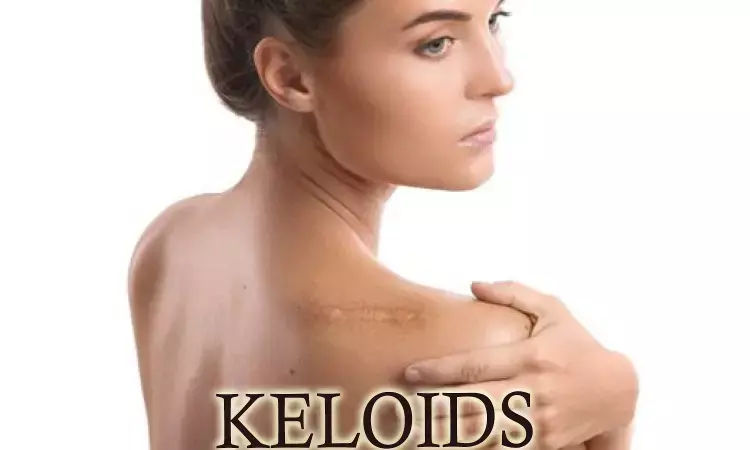- Home
- Medical news & Guidelines
- Anesthesiology
- Cardiology and CTVS
- Critical Care
- Dentistry
- Dermatology
- Diabetes and Endocrinology
- ENT
- Gastroenterology
- Medicine
- Nephrology
- Neurology
- Obstretics-Gynaecology
- Oncology
- Ophthalmology
- Orthopaedics
- Pediatrics-Neonatology
- Psychiatry
- Pulmonology
- Radiology
- Surgery
- Urology
- Laboratory Medicine
- Diet
- Nursing
- Paramedical
- Physiotherapy
- Health news
- Fact Check
- Bone Health Fact Check
- Brain Health Fact Check
- Cancer Related Fact Check
- Child Care Fact Check
- Dental and oral health fact check
- Diabetes and metabolic health fact check
- Diet and Nutrition Fact Check
- Eye and ENT Care Fact Check
- Fitness fact check
- Gut health fact check
- Heart health fact check
- Kidney health fact check
- Medical education fact check
- Men's health fact check
- Respiratory fact check
- Skin and hair care fact check
- Vaccine and Immunization fact check
- Women's health fact check
- AYUSH
- State News
- Andaman and Nicobar Islands
- Andhra Pradesh
- Arunachal Pradesh
- Assam
- Bihar
- Chandigarh
- Chattisgarh
- Dadra and Nagar Haveli
- Daman and Diu
- Delhi
- Goa
- Gujarat
- Haryana
- Himachal Pradesh
- Jammu & Kashmir
- Jharkhand
- Karnataka
- Kerala
- Ladakh
- Lakshadweep
- Madhya Pradesh
- Maharashtra
- Manipur
- Meghalaya
- Mizoram
- Nagaland
- Odisha
- Puducherry
- Punjab
- Rajasthan
- Sikkim
- Tamil Nadu
- Telangana
- Tripura
- Uttar Pradesh
- Uttrakhand
- West Bengal
- Medical Education
- Industry
Combination Therapy of Bleomycin and Triamcinolone Promising for Keloid Treatment: Study

Keloids are abnormal growths of scar tissue that can form at the site of a wound or injury. Triamcinolone acetate injections are commonly used to treat keloids, but some cases do not respond well to this treatment or experience recurrence. Recently, intralesional bleomycin has shown promising results in keloid treatment.
Triamcinolone acetate injections are a standard treatment for keloids, but their efficacy varies, and recurrence rates can be high. Intralesional bleomycin has emerged as a potential alternative, but its effectiveness in combination with triamcinolone remains uncertain.
A recent study aimed to evaluate the efficacy of combining bleomycin and triamcinolone for refractory keloids. This study was published in the journal of Dermatologic Surgery by Mozafari and colleagues. A total of 33 patients with resistant keloids were enrolled in the study. They received a mixture of bleomycin (1 u/cc) and triamcinolone acetonide (13.3 mg/cc) injected intralesionally every 4 to 6 weeks for up to 6 cycles. The Japan Scar Scale (JSS) and physician's global assessment were used to evaluate clinical improvement, and side effects were recorded.
The key findings of the study were:
• The study included 33 patients (8 men, 25 women) with a mean age of 36.52 years.
• After treatment, all patients showed a significant decrease in total JSS scores compared to baseline (p < .001). 26 keloids (78.8%) exhibited excellent response (75%–100% flattening), 7 keloids (21.2%) showed fair response (25%–75% flattening), and none showed poor response (<25% flattening)
• Side effects included ulceration (33.3%), hyperpigmentation (33.3%), hypopigmentation (15.15%), secondary infection (33.3%), and telangiectasia (15.15%).
The combination of bleomycin and triamcinolone proved to be effective in treating refractory keloids, with the majority of patients showing significant improvement. This therapy offers a promising option for individuals who have not responded well to traditional treatments. However, side effects such as ulceration and hyperpigmentation were observed and should be monitored closely during treatment.
Reference:
Dr Riya Dave has completed dentistry from Gujarat University in 2022. She is a dentist and accomplished medical and scientific writer known for her commitment to bridging the gap between clinical expertise and accessible healthcare information. She has been actively involved in writing blogs related to health and wellness.
Dr Kamal Kant Kohli-MBBS, DTCD- a chest specialist with more than 30 years of practice and a flair for writing clinical articles, Dr Kamal Kant Kohli joined Medical Dialogues as a Chief Editor of Medical News. Besides writing articles, as an editor, he proofreads and verifies all the medical content published on Medical Dialogues including those coming from journals, studies,medical conferences,guidelines etc. Email: drkohli@medicaldialogues.in. Contact no. 011-43720751


